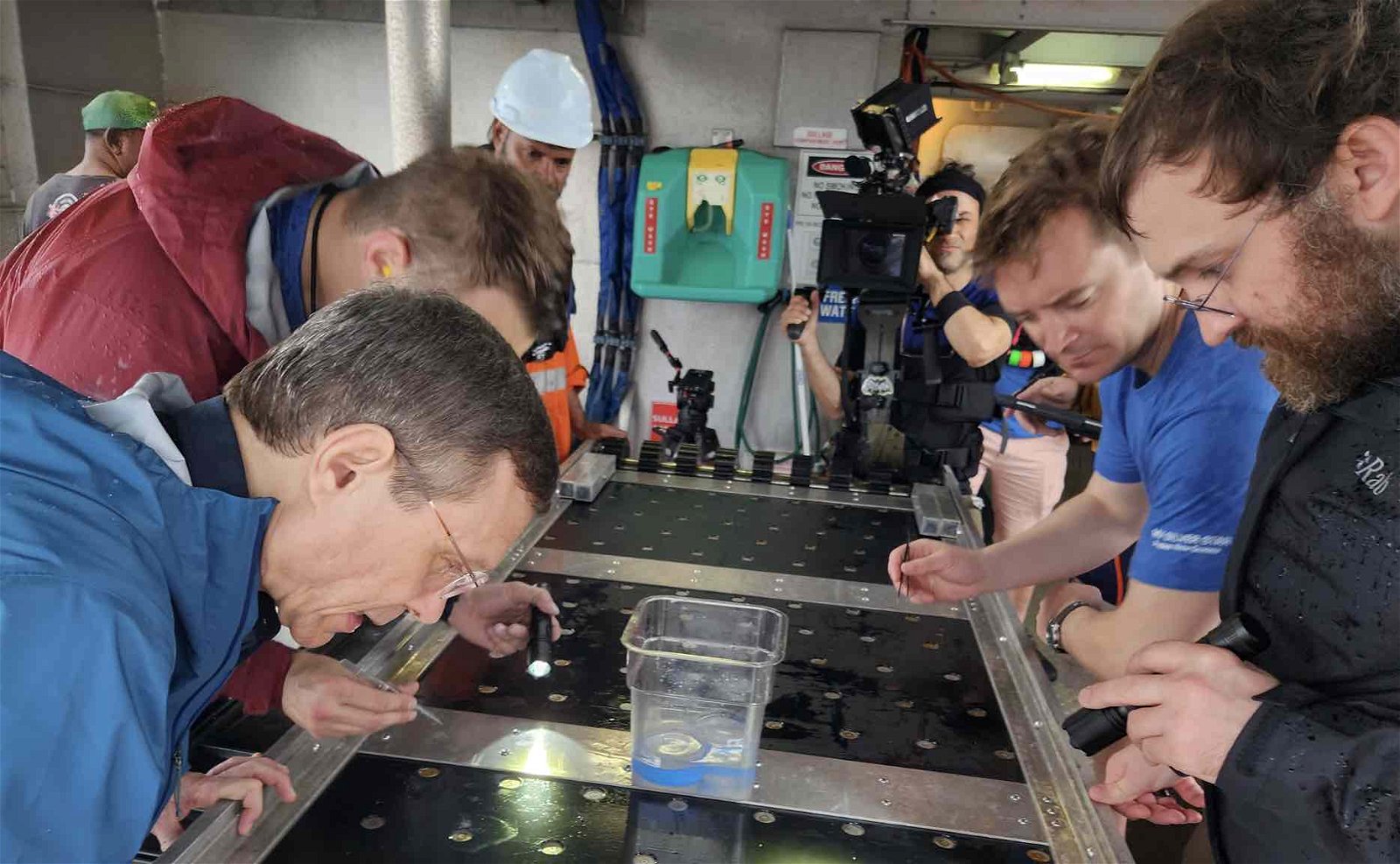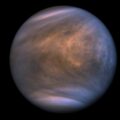These combined ninth and tenth installments in an ongoing series of updates from Harvard Astronomer Avi Loeb, head of The Galileo Project, document the team’s expedition to attempt the recovery of an interstellar object from the floor of the Pacific Ocean. This combined two-part entry covers Day 7 (June 17, 2023) of the team’s expedition.
Part 9 (June 17, 2023)
The Silver Star engine made its periodic breathing moan as Rob Millsap operated the winch to pull out the magnetic sled from the ocean floor for the second time through the localization box provided by the Department of Defense for the first recognized interstellar meteor, IM1.
At that moment, it occurred to me that we are adopting a rather primitive method for collecting meteorite fragments. But according to the proverbial phrase: “When life gives you lemons, make lemonade.”
Gladly, we already have one anomaly: a manganese-platinum wire with an abundance pattern that differs from common commercial products, as detailed in my previous report.
While waiting for the new harvest, Rob McCallum told me that today is his birthday. His biggest wish for a birthday gift is an exotic delivery by the sled. The delivery table is ready. If this gift came all the way from interstellar space, it was a long time in the making.


Unfortunately, as soon as we examined both sides of the sled after its second IM1 run, we found it to be clean. Apparently, the sled did not touch the ocean floor, a fact confirmed by the video footage record of its cameras. The ocean was deeper than 2,150 meters and the lift by the cable tension kept it above the bottom of the ocean. Despite its mass of 200 kilograms, the sled behaved like a kite. Without getting to the bottom of the ocean, we cannot get to the bottom of the nature of IM1.
Using Bernoulli’s equation of fluid dynamics, I calculated the maximum lift that the sled could have experienced from ocean currents and found it to be negligible compared to gravity, given the mass of the sled. The primary challenge in getting the sled to the ocean floor stems from the drift in the motion of the ship relative to the sled and the resulting tension in the cable that connects the two.
Even before we watched the video, we could tell that the sled did not hit the ground because it did not collect any volcanic ashes, which constitute our background. The minimal signal should be that of the background and the sled was far too clean in its second run through IM1’s site.
We plan a third run today in the opposite direction, along with the flow of ocean currents to avoid a relative drift between the ship and the sled. Here’s hoping that this time around, the sled will deliver an interstellar gift to Rob McCallum on his birthday today. No other ocean explorer deserved this honor more than him.
Part 10 (June 17, 2023)
During my early morning jog on the deck, I witnessed how the magnetic sled is being pulled along by our ship, Silver Star, in the third run through the Pacific Ocean site of the first recognized interstellar meteor, IM1. Art Wright was standing a few feet away from me, making sure that the winch cable is oriented properly so as to enhance the chance of the sled lying on the ocean floor.
By lunchtime, the sled was brought back to the deck. I was excited to examine its harvest. The presence of additional manganese-platinum wires in IM1’s site but not in control regions could potentially establish a techno-signature if the material came from interstellar space.
During the pullout of the sled, Rob Millsap asked me to hold the winch handle for him. I assured him: “Sure, I am not a nerd. I am used to heavy machinery as I was born on a farm.”
Alas, the heavy side of the sled showed mainly volcanic ash on the rims of its strong neodymium magnets but it spent only 11 minutes on the ocean floor. Our main challenge is that the tension in the cable had a vertical component stronger than gravity and made the sled fly like a kite. One way to avoid the “kite effect” is to add mass to the sled, which we plan to do in the next run. Another approach is to add mass in front of the sled so as to lower the vertical tension of the cable on the sled. Finally, we could change the pivot point where the sled connects to the cable to be closer to the center of mass rather than the front of the sled.
The path of the third run went at an angle relative to our first IM1 run and did not spend much time at the most likely path of the meteor. After scooping the ash from the sled magnets, I met with Rob Millsap and Art Wright in the Muster Station and suggested that we plan our fourth run closer to the likely IM1 path. Just as in real estate, the success of our search depends on three things: “location, location and location.”


The video footage from the sled cameras showed that the sled spent 11 minutes at the ocean floor, but only on its heavy side – consistent with the trapped ash locations. For now, our analysis shows mostly volcanic ash. The transition from the control regions to run 3 can be summarized in terms of the sober biblical cycle: from ashes to ashes, dust to dust.
Expedition team meeting at the ship’s upper floor to discuss the strategies for keeping the sled on the ocean floor and avoiding the “kite effect.”
Shortly after the harvest from run 3, I had a Zoom video session with the Event Horizon podcast of John Michael Godier (for viewing details, click here).
During our team meeting to discuss sled strategies for avoiding the “kite effect,” Rob McCallum referred to Art Wright as “old school.” Art asked me what it means, and I explained: “It means that you are reliable.” Art assured me that we will visit the most likely path of IM1 in the fourth run, which just started, and I trust we will.
Hopefully, our future sled runs will be marked by a more uplifting transition: from volcanic ashes to technological debris from interstellar space. The verdict as to whether this transition exists lies at a depth of 2 kilometers under Silver Star. It has been there since January 8, 2014. We now have the first opportunity to find it as long as we can keep the sled on the ocean floor.
Avi Loeb is the head of the Galileo Project, founding director of Harvard University’s – Black Hole Initiative, director of the Institute for Theory and Computation at the Harvard-Smithsonian Center for Astrophysics, and the former chair of the astronomy department at Harvard University (2011-2020). He chairs the advisory board for the Breakthrough Starshot project and is a former member of the President’s Council of Advisors on Science and Technology and a former chair of the Board on Physics and Astronomy of the National Academies. He is the bestselling author of “Extraterrestrial: The First Sign of Intelligent Life Beyond Earth” and a co-author of the textbook “Life in the Cosmos,” both published in 2021. His new book, titled “Interstellar”, is scheduled for publication in August 2023.

